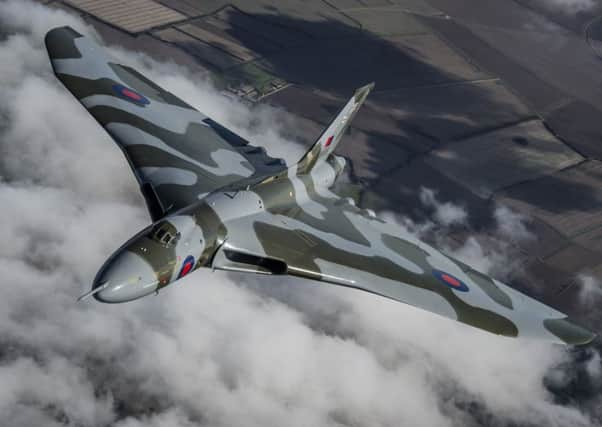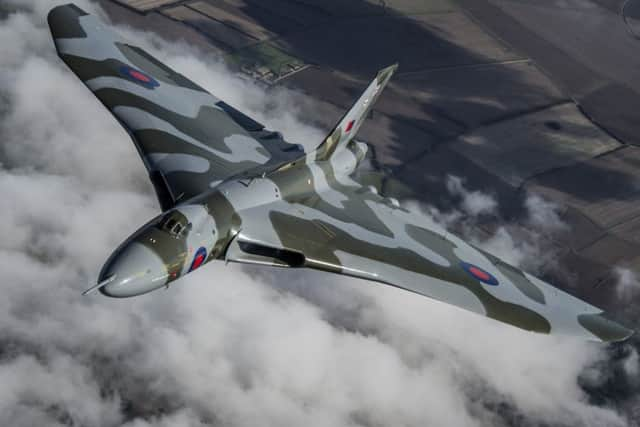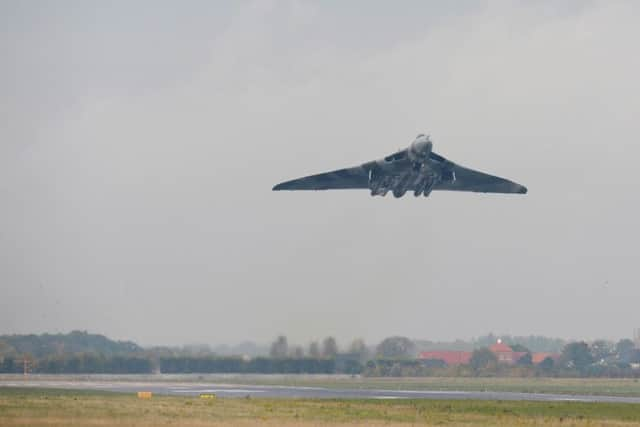Yorkshire's Vulcan bomber team help mystery Cold War aircraft return to the sky


Members of The Vulcan To The Sky Trust will reveal the identity of the mystery aircraft on Thursday, after the unprecedented success of its last project involving the 55-year-old nuclear bomber XH558.
Invited guests and project backers will be gathering at a West Midlands airfield hangar for the unveiling of the plane, which has been described as a “celebrity” of Britain’s jet engine golden age.
Advertisement
Hide AdAdvertisement
Hide AdThe restoration will need the support of public fund-raising but the plan is to have the plane back in the air by 2018, the RAF’s centenary year.


Dr Richard Pleming, who led the Vulcan restoration team and is now trust chief executive, said: “I am thrilled to announce trust plans to restore and fly another important aircraft for the British public, as we did with XH558, with an education programme around her to inspire new generations of engineers and aviators.”
Trustees have already assembled a team of engineers, some of whom worked with the aircraft during its heyday, and an array of spare parts including six engines needed to get the project off the ground.
The fuselage will be stripped down this summer for a detailed inspection of the work and costs involved, before the planned refit can begin in 2017.
Advertisement
Hide AdAdvertisement
Hide AdDuring the rebuild, aviation enthusiasts will be able to pre-book tours to see the restoration taking place at Robin Hood Airport in Doncaster.


The trust’s engineering director Andrew Edmondson said: “This is a great opportunity for enthusiasts to see another fascinating example of British aviation engineering completely disassembled, to explore the technology and learn how she works, and to follow the restoration in fascinating detail.”
Following the Shoreham air disaster in which 11 people were killed after a vintage jet crashed at a show in 2015, the restoration team has said aircraft safety remains firmly at the centre of its work.
A Former Chief Inspector of Air Accidents Ken Smart is among the key people over-seeing the project.
Advertisement
Hide AdAdvertisement
Hide AdHe said: “I’ll be looking at the safety aspect; the safety review, how we fly it and safety processes, and convincing the Civil Aviation Authority (CAA) this is a project under the tightest control.


“I saw during my time with the Air Accidents Investigation Branch some projects that were not well-managed, but I am glad to say the Vulcan project was extremely well-managed.”
He added: “This aircraft is a sound structure, but it needs to be made airworthy. Everything will be checked but the basic airframe is pretty sound.”
The trust’s latest project follows its £25 million refit and operation of XH558, which was brought back into service in 2008 before its final flight last year.
Advertisement
Hide AdAdvertisement
Hide AdThe Vulcan was the last to fly as an RAF aircraft in 1992, and is now displayed at Robin Hood Airport, having been retired.


It permit to fly was withdrawn in October 2015 when the engineers who kept it airworthy accepted they no longer had the 1950s’ skills to ensure its safe flight.
Despite being built as nuclear bombers, the Vulcans’ most famous mission was in 1982 when they bombed the runway at Port Stanley during the Falklands War - a raid which has gone down in military history due to the complex multiple refuelling operation that was necessary over such huge distances.
Further information about the trust’s work and updates on its latest project can be found at www.vulcantothesky.org.